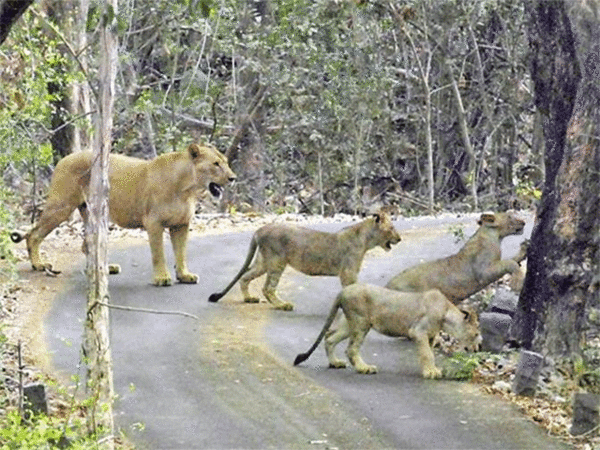
Biodiversity, or the amazing variety of life on Earth, is an acknowledgment of the planet’s endurance and a source of numerous benefits to humans. From the complex tapestry of environments that sustain us to the discoveries that propel innovation, biodiversity is the support of life as we know it. This essay examines the significance of biodiversity protection, the problems it challenges, and the ethical and ecological responsibility of maintaining it for future generations.
The Importance of Biodiversity
Biodiversity extends the entire range of life on Earth, from microbes to towering trees, and from the depths of the oceans to the highest mountaintops. It provides critical ecological services that benefit human well-being, like as clean air and water, rich soil, and crop pollination. Biodiversity also adds to cultural, artistic, and recreational elements, enhancing our lives in endless ways.
Environmental Stability
One of the most important functions of biodiversity is maintaining ecological stability. Diverse ecosystems are stronger and adaptable to environmental change. They can survive problems such as disease outbreaks, variations in temperature, and invasive species better, eventually ensuring the planet’s long-term health.
Scientific Advances
Biodiversity is a wealth of scientific discoveries. Many advances have resulted from the study of many creatures, including novel medications to creative technology. Biodiversity is an important resource because of its capacity for future discoveries, including solutions to essential global concerns.
Ethical Obligation

There is an ethical obligation to maintain biodiversity in addition to its utilitarian worth. Every species has intrinsic worth and the right to exist. Human activities have contributed to the extinction of numerous species, and it is our ethical responsibility to prevent new extinctions of species.
Biodiversity Threats
Despite its importance, biodiversity is under attack in new ways. Human activities are causing an unprecedented decline in species and ecosystems as a result of population growth, resource use, and habitat destruction.
Habitat Depletion

Natural habitat conversion for agriculture, urban areas, and construction projects is a major driver of biodiversity loss. Critical habitats are being destroyed as a result of forest destruction, wetland drainage, and development on the coast, pushing species to extinction.
Changes in the Climate
Climate change alters temperature and precipitation patterns, causing ecosystems to be disrupted. Species that are unable to adapt or move to suitable environments face extinction. Because ecosystems have connections, changes in one region can have profound consequences for others.
Overexploitation
Overharvesting of resources, such as overfishing and illegal wildlife trade, puts enormous pressure on delicate species. Poaching threatens famous animals such as rhinos, elephants, and tigers, which are fueled by demand for exotic pets, traditional medicine, and luxury products.
Pollution
Pollution, such as plastic trash, herbicides, and agricultural runoff, impacts ecosystems and affects species. Plastic pollution, in particular, affects marine animals, while pesticides and substances harm ecosystems on land and in water.
Species that are invasive
Non-native species cause disruption to ecosystems by outcompeting native species, spreading diseases, and changing habitat dynamics. Invasive species are an important contributor to the loss of biodiversity on islands and in sensitive environments.
The Importance of Biodiversity Preservation

The preservation of biodiversity is not only a matter of choice; it is an ethical and ecological responsibility.
Ethical Responsibility
It is a moral obligation to protect biodiversity. Every species has the right to exist, and our actions should reflect our appreciation for the fundamental value of all living things. Mortality is permanent, and once a species is gone, it is gone forever. We must take action to prevent the extinction of irreplaceable species.
The Environmental Imperative
Biodiversity helps to sustain the ecosystems on which humans rely. Protecting biodiversity ensures the provision of important ecosystem services such as clean air, freshwater, and soil that is fertile. It also increases ecosystem resilience, making them better able to survive environmental changes and disasters.
Economic Necessity
Biodiversity is not only a source of inspiration, but it is also a driver of economic growth. Forestry and agriculture rely on ecosystem services like blooming and nitrogen cycling. Tourism that is environmentally friendly, and based on biodiversity-rich environments, creates money for communities all over the world.
Taking Initiative
Individuals, communities, governments, and international organizations must all work together to conserve biodiversity.
Conservation Initiatives
Conservation measures such as protected areas, habitat restoration, and captive breeding programs are essential for protecting vulnerable species and ecosystems. These efforts must be supported and expanded.
Practices that are Long-Term
Sustainable agriculture, fisheries, and forestry activities reduce demand on natural ecosystems and resources. Consumption choices that are environmentally responsible also help to reduce the demand for products that threaten biodiversity.
Legislation and Policy
Governments must develop and implement biodiversity-protection policies and regulations. International agreements, such as the Convention on Biological Diversity, serve as a foundation for international cooperation.
Education and Public Awareness
It is critical to educate the public about the value of biodiversity and the risks it experiences. Awareness campaigns may encourage people to take action and contribute to conservation efforts.











